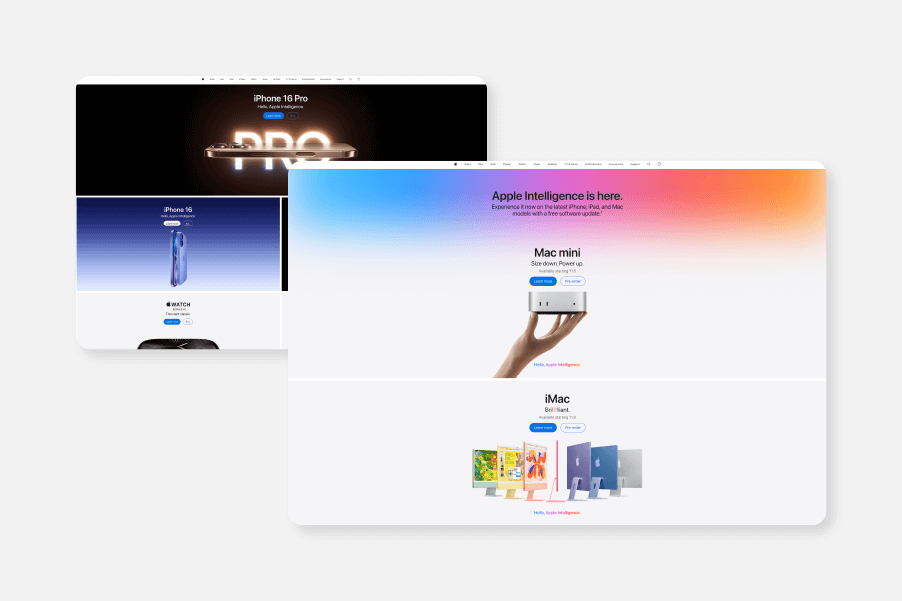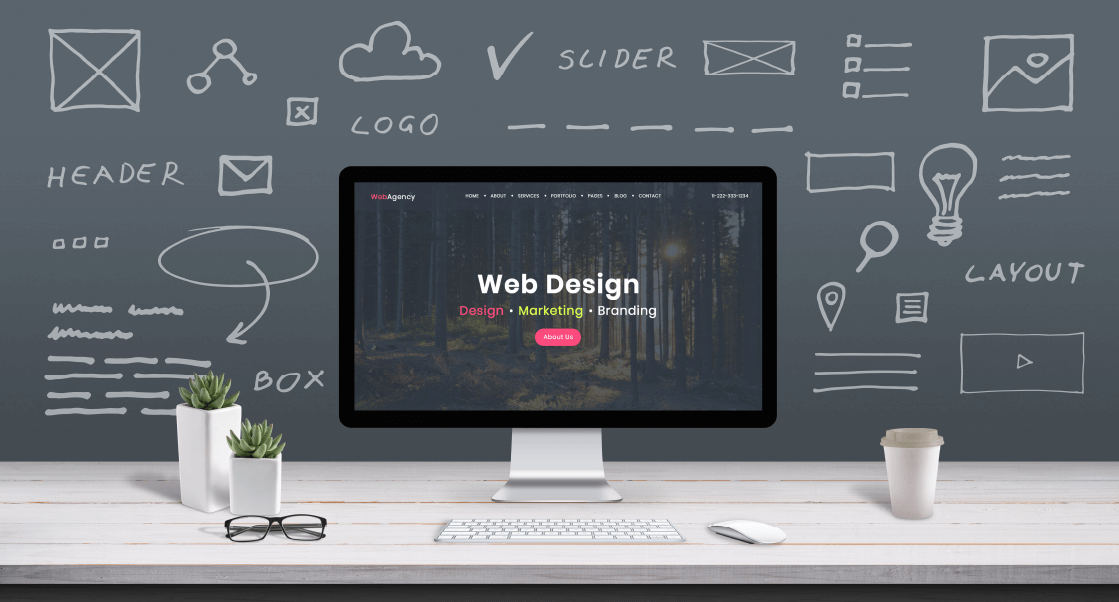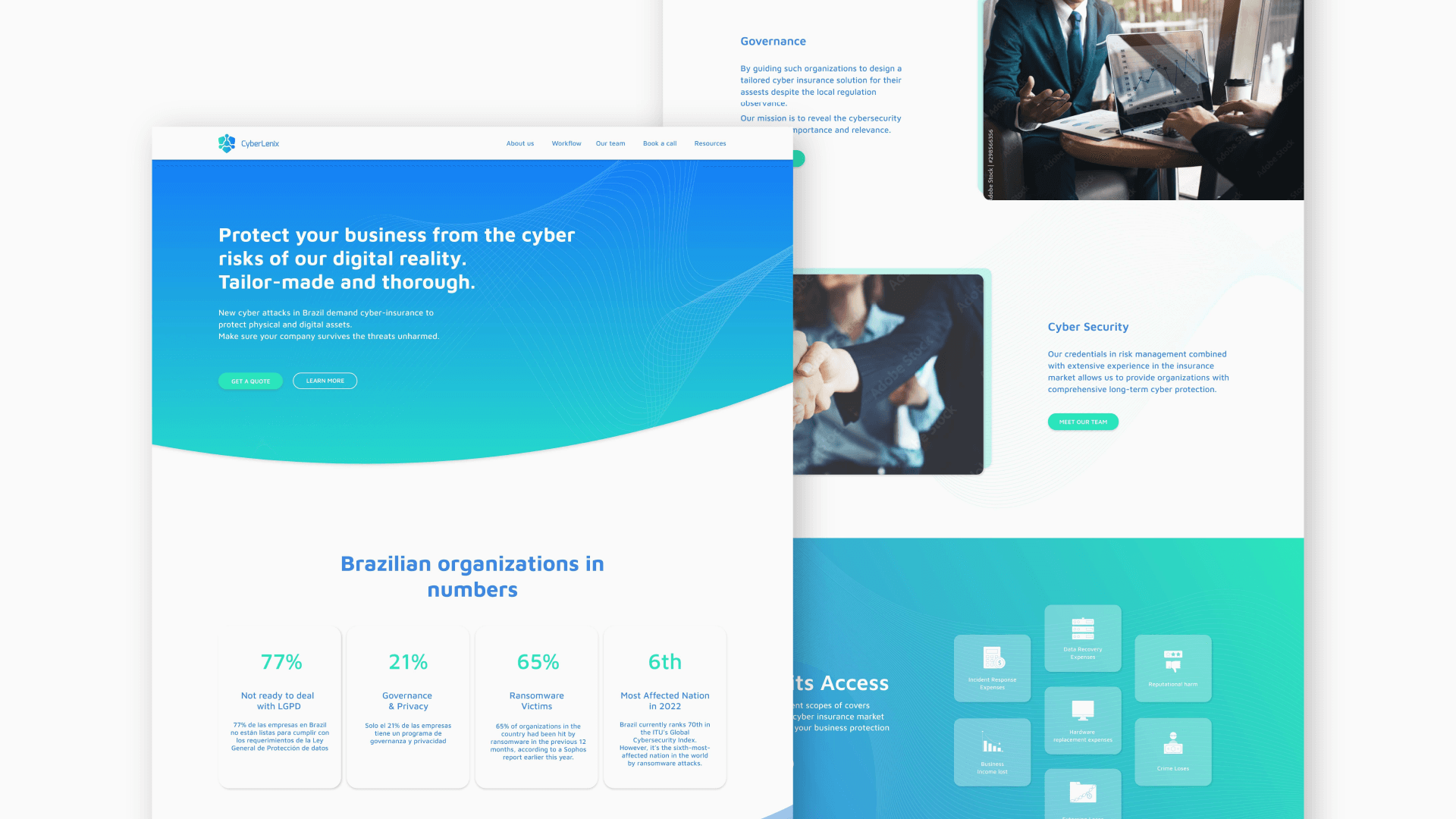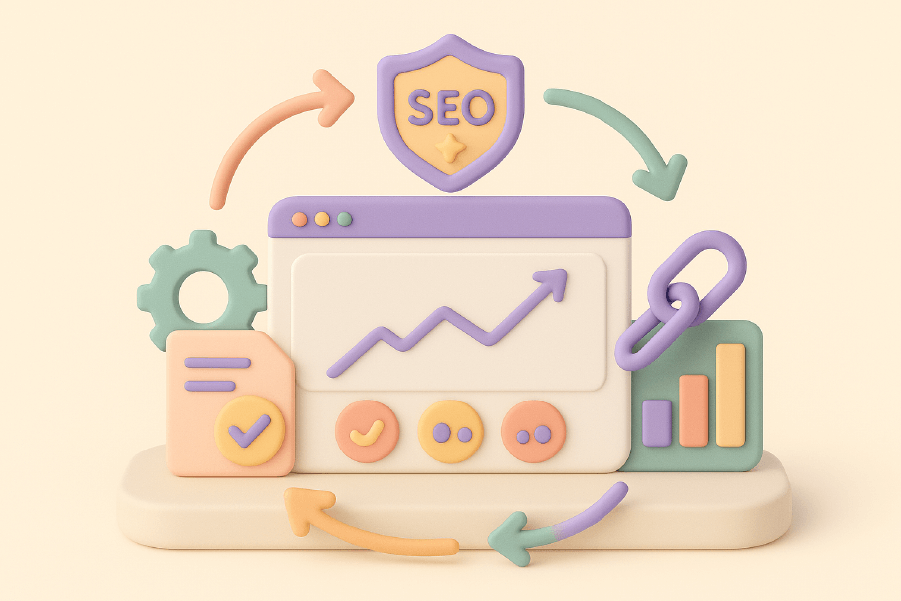A professional website is often the first impression potential clients have of a brand. A successful corporate website goes beyond aesthetics; it’s a strategic asset that embodies brand values, builds trust, and engages users. Discover the core elements behind successful corporate website design with real-world examples that show how a well-built site can boost brand growth, trust, and long-term value.

A corporate website is a crucial aspect of a company’s online presence. It serves as a digital front door, providing essential information about the company, its products or services, and its values. In today’s digital age, a corporate website is no longer a luxury but a necessity for businesses of all sizes. A well-designed corporate website can help a company stand out from its competitors, build brand integrity, and engage with potential clients, investors, and partners.
A good corporate website should be visually appealing, easy to navigate, and optimized for search engines (SEO). It should effectively communicate the brand’s story, values, and mission, while also providing a seamless user experience. For instance, a successful corporate website might feature a clean layout, intuitive navigation, and high-quality visuals that align with the brand’s identity. This not only enhances user engagement but also builds trust and credibility.
Moreover, a successful corporate website can drive business growth, increase brand awareness, and establish a company as an industry leader. By integrating strategic design elements and SEO best practices, companies can ensure their corporate site reaches a broader audience and converts visitors into loyal clients. In essence, a well-crafted corporate website is a powerful tool for achieving long-term business success.
A well-designed corporate website serves as the digital headquarters for a brand, seamlessly blending essential web design elements to build trust, attract clients, and keep users engaged. However, many companies struggle with creating a site that is both visually compelling and intuitive.
An effective corporate website should guide visitors effortlessly, helping them find key information without feeling overwhelmed by excessive content or inconsistent messaging. Additionally, it should communicate the brand’s story, ensuring that visitors can connect with and remember the brand.
A streamlined approach to corporate website design can address these challenges by making content both relevant and accessible. Clear service sections, a focused homepage, and intuitive navigation are essential to provide a positive experience, especially for users across various industries. Organized visual elements—like a cohesive color scheme, brand-aligned design, and simple menu items—enhance usability and make navigation straightforward.
Top brands like Microsoft and Apple are great examples of clean, user-centered design. Their websites prioritize essential information and maintain minimalist layouts, making it easy for visitors to find core services and connect with the brand’s identity. This approach projects a professional, credible image that leaves a lasting impression.
For businesses working with a skilled web designer, incorporating these principles can turn a site into an effective tool for building trust and engaging users.

To build a functional and effective corporate website, several foundational components must be addressed. Each aspect supports a cohesive user experience that aligns with both brand identity and business goals.
A well-structured website is crucial for retaining visitors and improving their overall experience. Implementing an elegant and intuitive drop down menu can significantly enhance user experience and optimize website navigation.
By organizing content efficiently, users can easily find the information or products they are looking for, which can lead to higher engagement and conversion rates.


User-Centered Navigation: Intuitive and Accessible
Complex or outdated navigation structures are common issues on corporate sites, often leading to user frustration. Simple, clear navigation helps users find key information quickly.
For example, Google demonstrates a user-friendly navigation structure with a search bar and a sticky menu, ensuring users can locate pages or information without retracing steps.
User-centered navigation promotes a logical structure, enhancing the user experience and supporting the business goal of retaining visitors. With seamless exploration, companies can reduce bounce rates and create a user-friendly experience that encourages deeper engagement.

Reinforcing Brand Identity through Visual Consistency
Aligning design elements with a brand’s identity is crucial. Web designers play a key role in creating the best corporate websites by using a consistent color scheme, high-quality visuals, and fonts that reflect the brand’s personality and values.
For example, a clean layout and cohesive color scheme communicate professionalism and reliability, ensuring visitors associate the site with credibility. Consistent branding enhances recognition and encourages trust, especially for returning visitors.

Mobile Responsiveness Across Devices
With mobile traffic accounting for over half of global web usage, responsive design is essential. A mobile-friendly site delivers an engaging experience across all device types, ensuring accessibility and usability.
Apple provides an excellent example, offering seamless navigation and accessibility on both desktop and mobile devices. For corporate websites, responsive design fosters a positive first impression on mobile visitors and prevents potential clients from leaving due to compatibility issues.

High-Quality, SEO-Optimized Content
Content is one of the most powerful elements in corporate website design, impacting both engagement and SEO rankings. Effective content should provide value, answer user questions, and maintain a tone consistent with the brand’s identity.
An example of effective SEO-driven content is a website that leverages keywords relevant to its services, while high-quality visuals and well-written text capture user interest.
Content must also be structured to improve readability, using clear headings, bullet points, and engaging visuals. Integrating SEO best practices, like keywords and metadata, ensures the website reaches relevant audiences and stands out on search engine results pages (SERPs).
This dual focus on value and visibility strengthens the site’s reach, enhancing both user engagement and organic traffic.

Fast Load Times and Performance Optimization
Website speed plays a critical role in user satisfaction and search engine rankings, as a slow-loading corporate site frustrates users and encourages high bounce rates.
Performance optimization techniques, like image compression and code minimization, can ensure a website loads quickly and smoothly.
For example, companies that optimize speed can see higher engagement and SEO benefits.
Slow load times often deter users, especially on mobile devices. Performance optimization ensures that corporate websites can meet user expectations and support the business’s goals by enhancing the user experience, reducing friction, and promoting sustained engagement.

Brand-Consistent, High-Quality Visuals
High-quality images and videos capture user interest and add to the website’s credibility.
Carefully selected visuals should reinforce the brand’s values, enhancing rather than overshadowing the content. Visuals should work cohesively to support the site’s structure and brand message, helping users feel connected and ensuring a professional presentation.
For instance, strategic use of color and layout reinforces the brand’s values, creating a lasting impression on users.
Every corporate website should have a clearly defined purpose, be it lead generation, brand visibility, or providing essential resources to clients. Understanding the audience and goal is fundamental to creating a successful corporate website that resonates with users.


Define Goals and Audience
Design choices should align with specific goals. Creating a website that clarifies services for clients, simplifying navigation, and making information more accessible helps connect clients with the services they need and align with business goals.
This goal-oriented approach is crucial for aligning design and content. Clearly defined purposes enable companies to prioritize elements that matter most to users, making the website a strategic tool that achieves business outcomes.

Develop a User-Centered Design Strategy
A user-centered approach ensures that every element on the website serves a purpose, tailored to the user’s needs. By designing from the user’s perspective, the website becomes more accessible and engaging, increasing overall user satisfaction.
This focus on user experience leads to higher engagement, encouraging users to interact more deeply with the brand. A user-centered strategy also facilitates easier navigation, allowing companies to guide visitors to high-priority sections efficiently.
Web design trends evolve rapidly, and staying current with effective practices can greatly benefit a company’s online presence. Below are some impactful design trends shaping today’s corporate sites.


Minimalism Paired with Interactive Features
Minimalism allows core content to shine by reducing clutter, while interactive elements add engagement.
For instance, Notion utilizes a simple layout with hover effects and low-res animations that maintain user interest without distracting from the content. A well-balanced minimalist design ensures users can find essential information quickly.

Personalized, Dynamic Content
Dynamic content personalizes the user experience by displaying relevant information based on browsing history or behavior.
This approach increases engagement by showing users the information they are most likely to value. A B2B website, for instance, could present specific case studies based on industry relevance, creating a more meaningful user experience that aligns with business goals.

Integrating Multimedia for an Engaging User Experience
Multimedia elements like videos create engaging storytelling opportunities for corporate websites, humanizing brands and simplifying complex messages. Stripe, for example, uses video backgrounds to create a connection with users and showcase products visually.
A multimedia approach adds an engaging layer to corporate websites without sacrificing load speed when optimized properly.
For more on creating synergy between SEO and Web Development to Build Long-Term Success for Startups, visit our guide: How SEO and Web Development Work Together to Build Long-Term Success for Startups.
A thoughtfully designed corporate website is an essential asset for achieving business goals. However, many companies underestimate the impact that a well-structured website can have on building strong client relationships and boosting engagement.
Rather than simply acting as an online brochure, a good corporate website can create meaningful interactions, establishing credibility and enhancing brand trust.


Building Engagement Through Effective Layout and Design
Without a user-friendly layout and cohesive design elements, a corporate website may unintentionally alienate visitors, reducing engagement and impacting credibility. A good corporate website should instead be a powerful tool for guiding user interactions, creating a seamless experience that keeps visitors engaged and drives conversions.
Focusing on visual consistency, intuitive design, and mobile accessibility allows companies to offer a professional, accessible experience across all devices. These elements strengthen trust and ensure that users can easily navigate essential content.

Structuring the Website Around the User Journey
Organizing a website around the user journey is essential for meeting both user expectations and business objectives. By highlighting key sections, simplifying navigation, and creating a cohesive color scheme, companies enhance engagement and make a lasting, positive impression.
Each element, from accessible menu items to strategic calls-to-action, contributes to a memorable user experience that aligns with brand values and goals.
When the site’s structure aligns with business objectives, it becomes more than a digital presence—it becomes a valuable tool that builds credibility, supports brand growth, and converts casual visitors into loyal clients, positioning the brand as a reliable leader in its industry.
Creating a successful corporate website goes beyond design, incorporating SEO-friendly solutions that address visibility and user experience challenges. For mb&l Consultores and Cyberlenix, this meant integrating built-in SEO, clear navigation, and optimized site structure to enhance both engagement and search engine performance.
For mb&l Consultores, the focus was on easy navigation and SEO-optimized content, enabling potential clients to access services swiftly while boosting search visibility. This targeted approach improved client interaction and drove high-quality traffic aligned with business objectives.

In Cyberlenix’s case, the cohesive design emphasized fast load times and responsive elements, crucial for building credibility. Combined with SEO enhancements, these features helped Cyberlenix expand its reach and establish a solid online presence, transforming the website into a strategic growth tool.

In today’s digital landscape, corporate websites often struggle to keep users engaged and build the necessary trust to convert visitors into clients. The challenge frequently lies in visual design; cluttered layouts, inconsistent design elements, or low-quality images can make a site feel disconnected and unprofessional.
Such issues not only hinder the user experience but also cause potential clients to lose confidence in the brand. A well-planned corporate website design that balances professionalism with a user-friendly approach is essential for creating a positive first impression that fosters trust.

Building a Cohesive, User-Friendly Interface
To enhance engagement, an effective corporate website should incorporate a clean and cohesive UI that aligns with the brand’s image. A unified color scheme and carefully selected typography can project a modern, trustworthy appearance that resonates with a target audience.
High-quality images play a significant role here; thoughtfully chosen visuals—such as images of products, facilities, or team members—add personality, helping transform a static website into an immersive brand experience. These elements guide users through key information, improving navigation and creating a welcoming atmosphere that encourages further exploration.

Engaging Users with Subtle Interactive Elements
An inviting visual design alone may not fully capture user interest. By integrating subtle interactive elements like dropdown menus, strategic calls-to-action, and intuitive navigation, websites can help users locate what they need quickly and effectively. Smooth animations and transitions within the UI add sophistication and enhance usability, creating a dynamic experience that keeps visitors engaged.
Together, these visual and interactive design choices result in a successful corporate website that not only informs but also invites users into the brand’s world, building trust and driving long-term growth.
Measuring the success of a corporate website is crucial to understanding its effectiveness and identifying areas for improvement. Here are some key metrics to track:

Website Traffic: Monitor the number of visitors to your website, including unique visitors, page views, and bounce rate. High traffic indicates strong interest, while a low bounce rate suggests that visitors find the content engaging.

Engagement Metrics: Track metrics such as time on site, pages per session, and social media engagement to gauge user engagement. These metrics help you understand how users interact with your site and which content resonates most with them.

Conversion Rates: Measure the number of visitors who complete a desired action, such as filling out a contact form or making a purchase. High conversion rates indicate that your website effectively guides users towards taking action.

Search Engine Rankings: Monitor your website’s search engine rankings for key terms and phrases to ensure your website is visible to potential clients. Higher rankings mean better visibility and more organic traffic.

User Experience Metrics: Track metrics such as user satisfaction, net promoter score, and customer feedback to gauge user experience. Positive feedback and high satisfaction scores indicate a successful user experience.
By tracking these metrics, you can gain valuable insights into your website’s performance and make data-driven decisions to improve its effectiveness.
A successful corporate website is one that drives business growth, increases brand awareness, and provides a seamless user experience. Regularly reviewing these metrics ensures that your corporate site remains a valuable asset in achieving your business goals.
Maintaining a corporate website is essential to its long-term success, ensuring that it remains secure, functional, and relevant to users. Routine maintenance tasks include:

Content Updates
Regularly refresh content to stay aligned with industry changes and user expectations, which improves SEO rankings and keeps the site informative.

Security Patches and Updates
Applying regular security patches helps protect the site from cyber threats. Updating plugins, themes, and software versions minimizes vulnerabilities and maintains user trust.

Automated Backups
Scheduled backups prevent data loss in case of technical issues or unexpected downtime, safeguarding valuable data and ensuring continuity.

Security Patches and Updates
Continuously monitor load times and usability across devices, as performance affects both user experience and SEO.
This includes optimizing images, reducing server response times, and maintaining clean, minimal code.

SEO Audits and Optimization
Conduct periodic SEO audits to align with evolving search engine algorithms, making sure the site maintains or improves its ranking.
Consistent maintenance ensures that corporate websites stay engaging, functional, and secure, directly contributing to long-term business goals by supporting a stable and professional online presence.
Website security is crucial for protecting user data, maintaining brand integrity, and preventing potential business interruptions. Corporate websites should implement several security measures:

SSL Certificates
SSL encryption is essential for secure data transfer between users and the site, protecting sensitive information and building user trust.

Data Encryption for Sensitive Information
Encryption protocols guard against unauthorized access to stored data, ensuring sensitive information remains confidential.

Two-Factor Authentication (2FA)
Adding an extra layer of security to login procedures helps protect restricted areas of the website, mitigating the risk of breaches.

Routine Security Audits
Regular audits and penetration testing identify and address vulnerabilities, ensuring that the site remains compliant with industry security standards.
These security practices protect both the business and its users, reinforcing the corporate website’s role as a trustworthy and reliable digital asset.

A corporate website is a strategic platform for conveying a brand’s values, mission, and story, helping to build a meaningful connection with visitors.
By incorporating elements like brand history, client success stories, and visual storytelling, companies make the site experience more memorable and engaging.
For example, an “About Us” section that highlights the brand’s journey and core values establishes trust with new visitors, showing authenticity and transparency.
Consistent use of brand colors, typography, and high-quality images that resonate with the target audience reinforces the company’s visual identity. This consistency strengthens brand presence across all pages, ensuring users feel a cohesive experience that aligns with the brand’s message.
By aligning design elements with the brand’s unique voice, a corporate website doesn’t just communicate information; it creates an experience that builds loyalty and positions the company as trustworthy and relatable.
In today’s digital landscape, a corporate website needs to do more than display information; it must engage visitors, build lasting trust, and be optimized to be found by search engines.
An SEO-focused website increases visibility, helping new visitors find the brand more easily through relevant search queries.
By combining user-friendly design, high-quality visuals, and SEO strategies like targeted keywords, optimized load times, and mobile compatibility, a well-designed site not only represents the brand but also actively supports growth by reaching a broader audience.
Cohesive design elements, intuitive navigation, and strategic calls-to-action guide users smoothly, creating a professional, credibility-building experience. When SEO is integrated into the design, each page becomes more discoverable, attracting high-quality traffic and turning a simple website into an invaluable asset for business growth.
If you’re ready to transform your website into a growth-driven tool that connects with new users, discover how our tailored solutions can bring your vision to life and elevate your online presence






Reach out to LIBRA 4 humans for expert guidance on tailor made SEO solutions.
Taking the first step often requires a leap of faith, and that's why we value these 30 minutes to understand the challenges your business faces.
Please complete a few questions so we can ensure our meeting is both efficient and productive.
Talk to you soon!